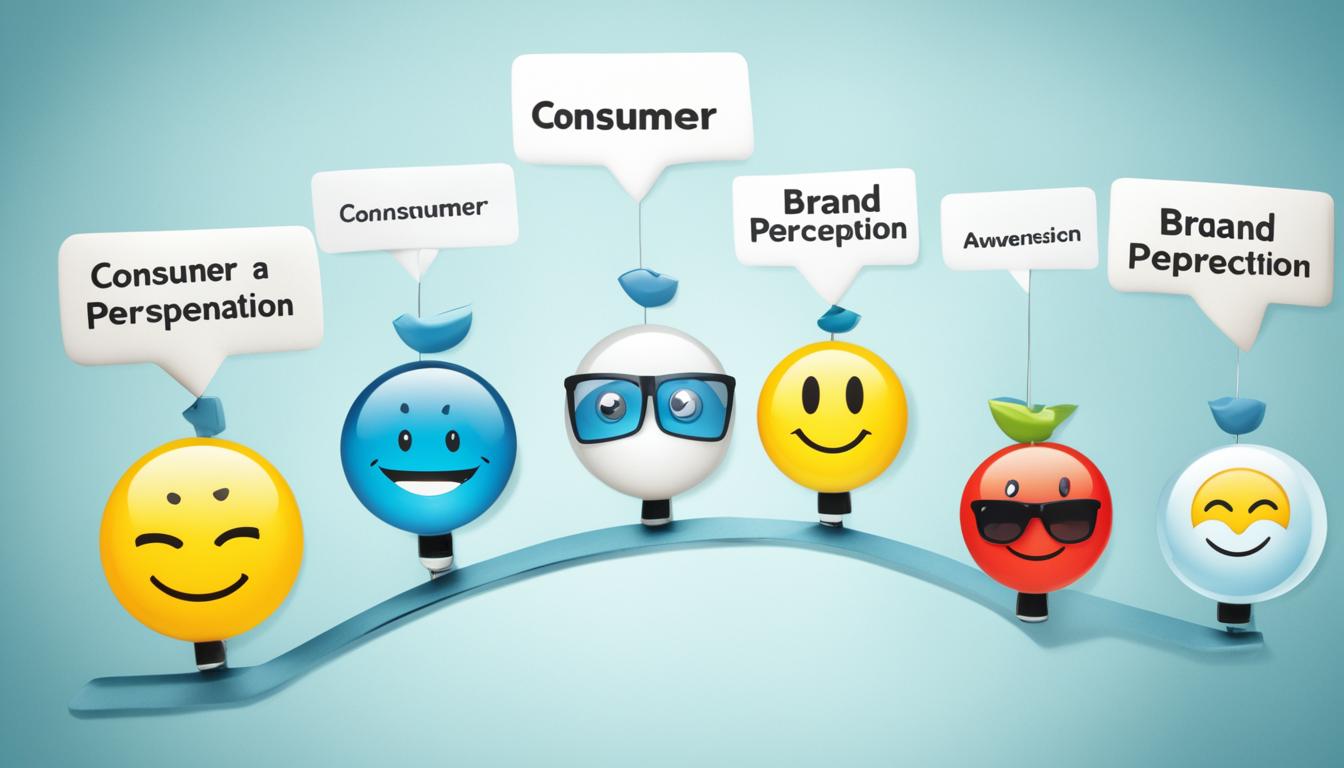Measuring brand awareness is crucial for businesses to understand the level of consumer consciousness about their brand and its impact on marketing effectiveness, customer loyalty, and sales. This comprehensive guide will provide step-by-step instructions, best practices, and valuable insights on how to measure brand awareness effectively. The tactics and metrics discussed in this article are derived from multiple sources and experts in the field.
Whether you’re launching a brand awareness campaign, evaluating your brand recognition metrics, or developing a brand awareness strategy, understanding how to measure brand awareness is essential. By assessing the visibility and recognition of your brand, you can gain valuable insights that can shape your marketing efforts and business success.
This article will cover the importance of measuring brand awareness, key metrics that you can use, and tools and techniques that can help you gauge and evaluate brand visibility. Additionally, it will provide a step-by-step guide on how to measure brand awareness effectively.
Whether you’re a small business owner, a marketing professional, or an entrepreneur, this article will equip you with the knowledge and strategies to elevate your brand awareness and make informed decisions for your business. Stay tuned for the next sections, where we delve into the significance of measuring brand awareness and explore the key metrics and tools you can utilize.
Importance of Measuring Brand Awareness
Measuring brand awareness plays a pivotal role in the success of any business. It is not just about knowing how well-known your brand is, but also understanding the impact it has on customer loyalty, market positioning, and overall business growth. By tracking brand awareness metrics, businesses can develop a comprehensive brand awareness strategy, create effective brand awareness campaigns, and increase brand awareness among their target audience.
One of the key advantages of measuring brand awareness is that it helps in building a strong customer base and fostering customer loyalty. When customers are aware of your brand and have a positive perception of it, they are more likely to choose your products or services over competitors.
“Brand awareness is a key driver of purchase decisions. Consumers are more likely to buy from brands they recognize and trust”
Furthermore, measuring brand awareness provides businesses with a competitive advantage. By understanding how well-known and recognizable your brand is, you can identify areas for improvement and differentiate yourself from competitors.
In addition, measuring brand awareness allows marketers to tailor their strategies effectively. By tracking brand awareness metrics, you can evaluate the effectiveness of your marketing efforts and identify which campaigns are successful in increasing brand awareness.
Overall, measuring brand awareness is essential for creating brand awareness, increasing market share, and driving business growth. It enables businesses to evaluate the effectiveness of their brand awareness campaigns and make data-driven decisions to optimize their marketing strategies.

Sources:
| Source | Link |
|---|---|
| HubSpot | https://www.hubspot.com/marketing-statistics |
| Forbes | https://www.forbes.com |
| Brandwatch | https://www.brandwatch.com/blog/brand-awareness-strategy/ |
Key Metrics for Measuring Brand Awareness
To effectively measure brand awareness, it is essential to identify the key metrics that provide insights into consumer recognition and perception of the brand. As businesses strive to evaluate and improve their brand visibility and impact in the market, brand recall surveys, brand sentiment analysis, brand perception tracking, measuring brand visibility, brand equity assessment, and calculating brand resonance become critical tools.
Brand Recall Surveys
Brand recall surveys assess the ability of consumers to remember and associate specific brands with product categories or attributes. By conducting these surveys, businesses gain valuable insights into the level of brand recognition among their target audience.
Brand Sentiment Analysis
Brand sentiment analysis involves studying consumer opinions, emotions, and attitudes towards the brand. This analysis helps businesses understand whether the overall sentiment is positive, negative, or neutral, enabling them to make informed decisions about brand positioning and messaging.
Brand Perception Tracking
Brand perception tracking involves monitoring how consumers perceive a brand and its attributes over time. By tracking changes in perception, businesses can identify areas of improvement and align their marketing strategies accordingly.
Measuring Brand Visibility
Measuring brand visibility entails assessing the extent to which a brand is exposed to the target audience through various channels such as advertising, digital marketing, and social media. This metric helps businesses evaluate the level of brand exposure and identify opportunities for enhancing visibility.
Brand Equity Assessment
Brand equity assessment determines the value and strength of a brand in the market. It involves evaluating factors such as brand loyalty, brand associations, and brand differentiation. By assessing brand equity, businesses can measure the effectiveness of their brand-building efforts.
Calculating Brand Resonance
Calculating brand resonance measures the depth of the customer-brand relationship. It assesses factors such as customer satisfaction, loyalty, and engagement, providing businesses with insights into the emotional and behavioral connection consumers have with their brand.
“Measuring brand awareness requires a multifaceted approach, combining various metrics to gain a comprehensive understanding of how consumers perceive and engage with a brand.”
These key metrics enable businesses to gauge the effectiveness of their brand awareness efforts and gain valuable insights into consumer recognition and perception. By incorporating these metrics into their brand measurement strategies, businesses can make data-driven decisions to optimize brand visibility, enhance consumer engagement, and drive business growth.
| Metric | Description |
|---|---|
| Brand Recall Surveys | Assesses consumer ability to remember and associate the brand with specific attributes or categories. |
| Brand Sentiment Analysis | Studies consumer opinions and emotions towards the brand to determine overall sentiment. |
| Brand Perception Tracking | Monitors changes in consumer perception and evaluates brand attributes over time. |
| Measuring Brand Visibility | Assesses brand exposure through various channels to evaluate brand reach and impact. |
| Brand Equity Assessment | Evaluates brand value, loyalty, and differentiation to measure brand strength. |
| Calculating Brand Resonance | Measures the emotional and behavioral connection between consumers and the brand. |
By leveraging these metrics, businesses can gain a comprehensive understanding of their brand awareness levels and make informed decisions to strengthen their brand presence in the market.

Tools and Techniques for Measuring Brand Awareness
When it comes to measuring brand awareness, businesses have access to a variety of tools and techniques that can provide valuable insights. These tools allow companies to track brand visibility, measure brand influence, and evaluate brand prominence in the market. By implementing the right tracking strategies, businesses can gather essential data to inform their brand awareness strategies and optimize their overall marketing efforts.
One of the most widely used tools for measuring brand awareness is Google Analytics. This powerful platform allows businesses to track website traffic and user behavior, providing valuable information on how consumers interact with their brand online. By analyzing data such as page views, bounce rate, and referral sources, businesses can gain insights into their brand’s online visibility and identify areas for improvement.
Social media analytics tools also play a vital role in measuring brand awareness. These tools allow businesses to monitor social media engagement, track the reach of their brand’s social media posts, and analyze audience demographics. By understanding how their brand is perceived and discussed on social media platforms, businesses can evaluate their social media strategy’s effectiveness and make informed decisions to increase brand influence and engagement.
“Social media analytics tools enable businesses to gain a deeper understanding of their brand’s social media performance and ensure that their brand is visible and influential in relevant online communities.”
In addition to online tracking tools, conducting customer surveys is an effective technique for measuring brand awareness. Survey tools like SurveyMonkey allow businesses to gather feedback directly from their target audience, capturing valuable insights into brand recognition, customer perception, and overall brand awareness. By regularly conducting surveys and analyzing the results, businesses can evaluate their brand’s prominence in the market and make data-driven decisions to enhance brand visibility.
By leveraging these tools and techniques, businesses can effectively track brand visibility, measure brand influence, and evaluate brand prominence. This enables them to make informed decisions to enhance their brand’s awareness, engagement, and overall success in the market.

How to Measure Brand Awareness?
To effectively measure brand awareness, it is crucial for businesses to follow a step-by-step guide. This guide will help you define your objectives, choose relevant metrics, set up tracking tools, collect data over a specific period, and analyze and interpret the data. By following this systematic approach, you can accurately measure brand awareness, evaluate brand visibility, and make informed decisions to enhance your brand strategy.
1. Define Your Objectives
The first step in measuring brand awareness is to clearly define your objectives. Clearly outlining what you want to achieve will guide your measurement strategy and help you determine the specific metrics to focus on.
2. Choose Relevant Metrics
Identify the most relevant metrics that align with your brand awareness goals. Some common metrics to consider include:
- Brand recall surveys: Conduct surveys to gauge consumer recall of your brand name, logo, or slogans.
- Brand sentiment analysis: Analyze social media comments and online reviews to assess the overall sentiment towards your brand.
- Brand perception tracking: Track how consumers perceive your brand by monitoring key attributes and associations.
- Measuring brand visibility: Evaluate the reach and exposure of your brand across different channels and touchpoints.
- Brand equity assessment: Assess the value and strength of your brand in the marketplace.
- Calculating brand resonance: Measure the level of engagement and loyalty among your target audience.
3. Set Up Tracking Tools
Implement the necessary tracking tools to collect data on the chosen metrics. This may include using web analytics tools like Google Analytics, social media monitoring platforms, or customer survey tools. Configure these tools to capture relevant data about your brand’s visibility and consumer perception.
4. Collect Data Over a Specific Period
Consistently collect data over a specific period to compare results and identify trends. This will provide a comprehensive view of your brand’s awareness levels over time. Make sure to collect data from multiple sources, such as website analytics, social media mentions, and customer surveys, to get a holistic perspective.
5. Analyze and Interpret the Data
Once you have gathered the data, analyze and interpret it to gain insights into your brand awareness. Look for patterns, correlations, and discrepancies that can inform your brand strategy. Use the collected data to evaluate the effectiveness of your marketing campaigns, identify areas for improvement, and make data-driven decisions to enhance brand visibility.
By following this step-by-step guide, you will be able to effectively measure brand awareness, evaluate brand visibility, and make informed decisions to strengthen your brand strategy. Remember, brand awareness measurement is an ongoing process, so regularly revisit your objectives, metrics, and tracking tools to ensure you stay aligned with your brand goals.
| Benefits of Measuring Brand Awareness | Challenges in Measuring Brand Awareness |
|---|---|
|
|
Conclusion
Measuring brand awareness is a crucial component of any successful brand strategy. It allows businesses to gauge their visibility in the market and optimize their efforts to enhance brand recognition and customer engagement. By implementing the tips and tricks outlined in this article, businesses can elevate the visibility of their brand, improve the effectiveness of their marketing campaigns, and establish a strong brand presence.
Understanding the level of awareness consumers have about your brand is essential for tailoring your strategies and resonating with your target audience. By employing the right metrics, tools, and techniques, you can accurately measure brand awareness and align your efforts with your desired brand perception.
Elevating brand visibility requires a comprehensive brand awareness strategy that encompasses various aspects, such as monitoring website traffic, analyzing social media engagement, and conducting customer surveys. By continually assessing and measuring brand awareness, businesses can adapt their strategies to achieve optimal results and establish a powerful brand position in the market.




